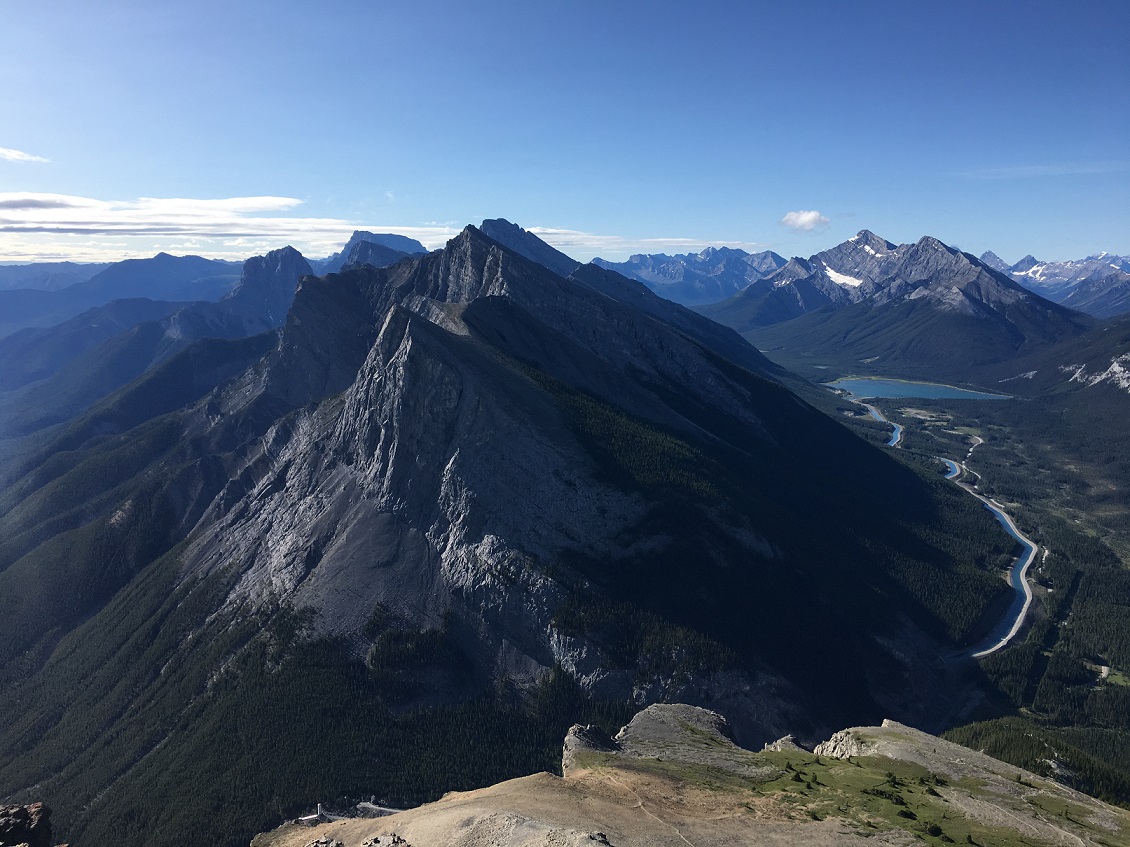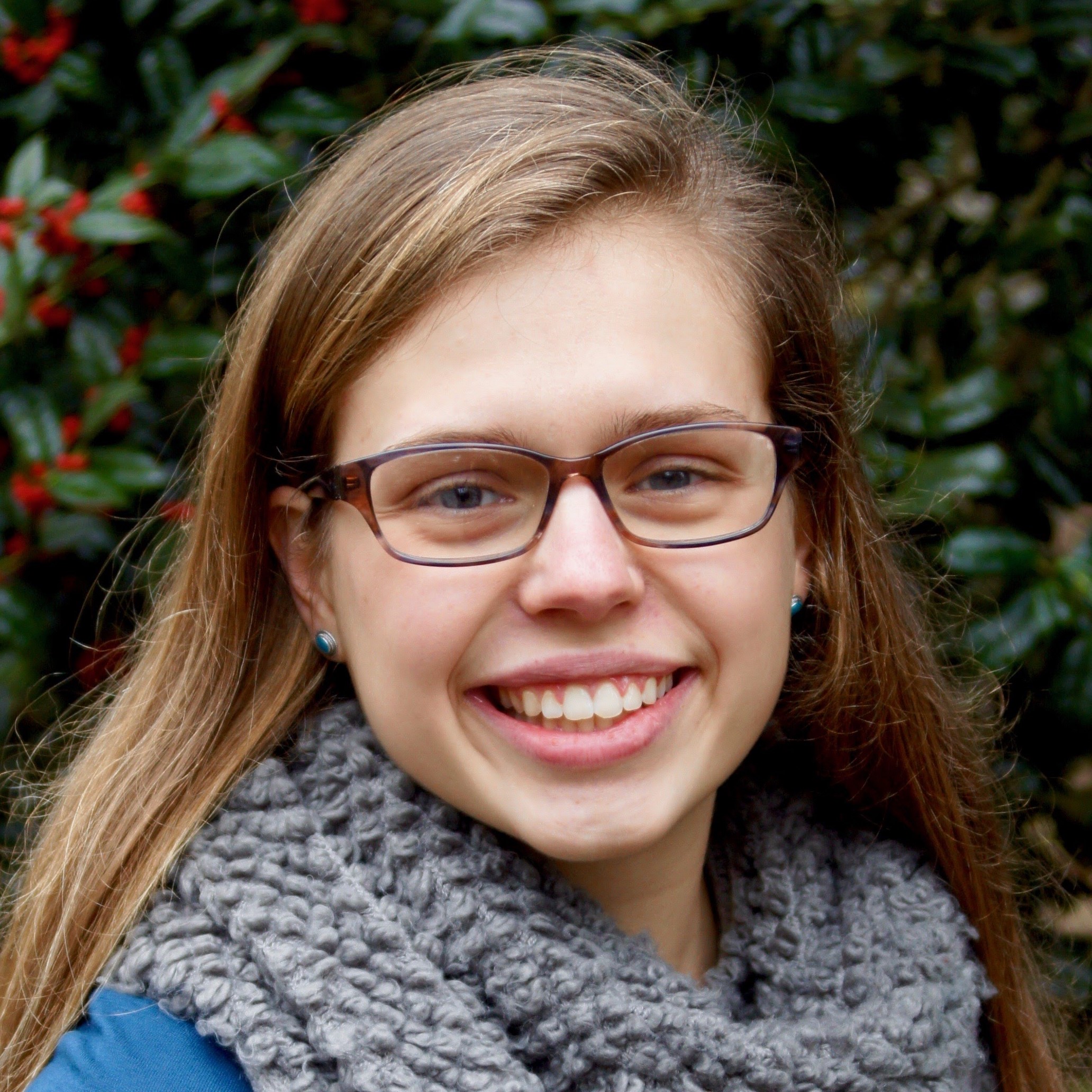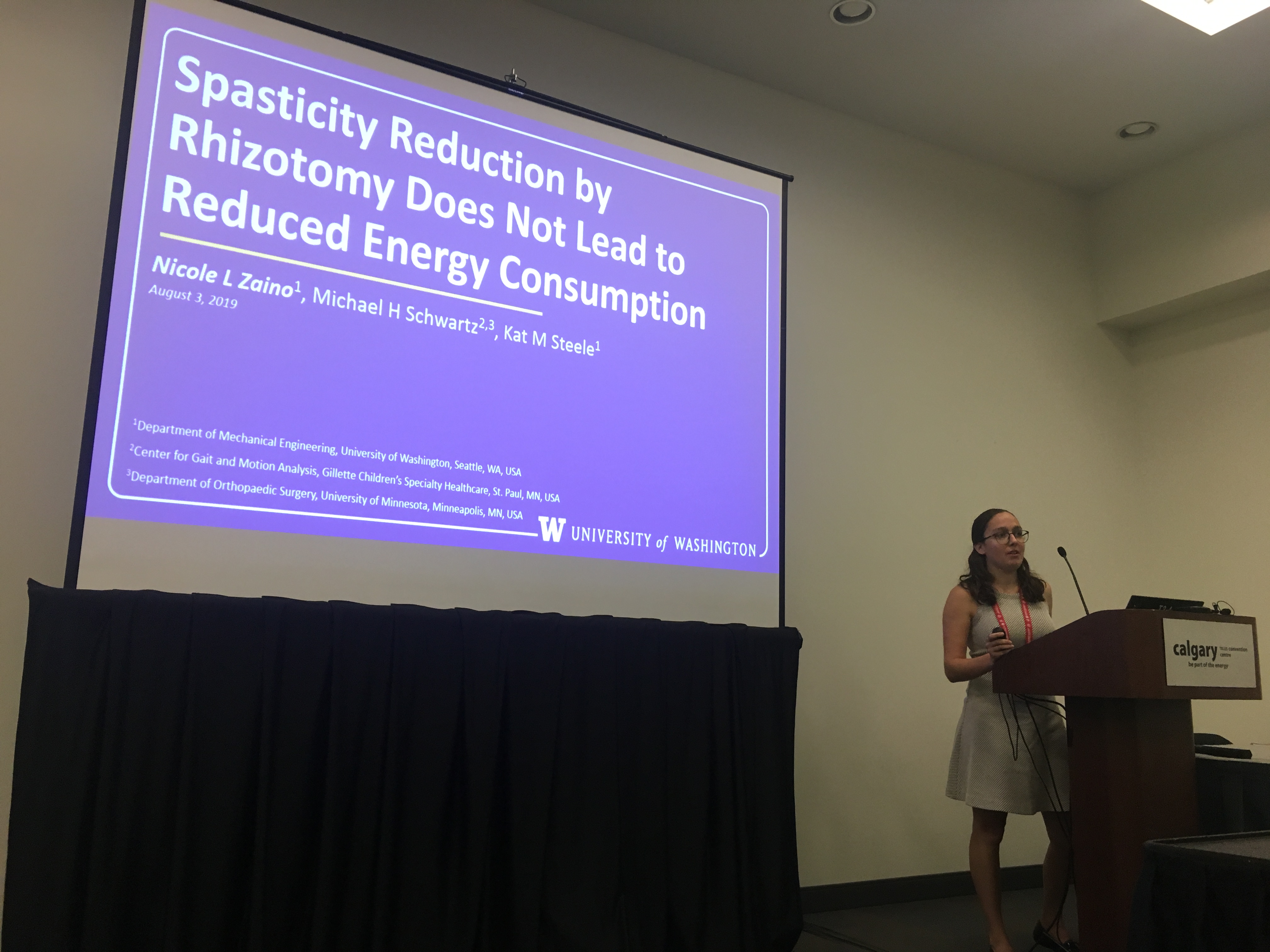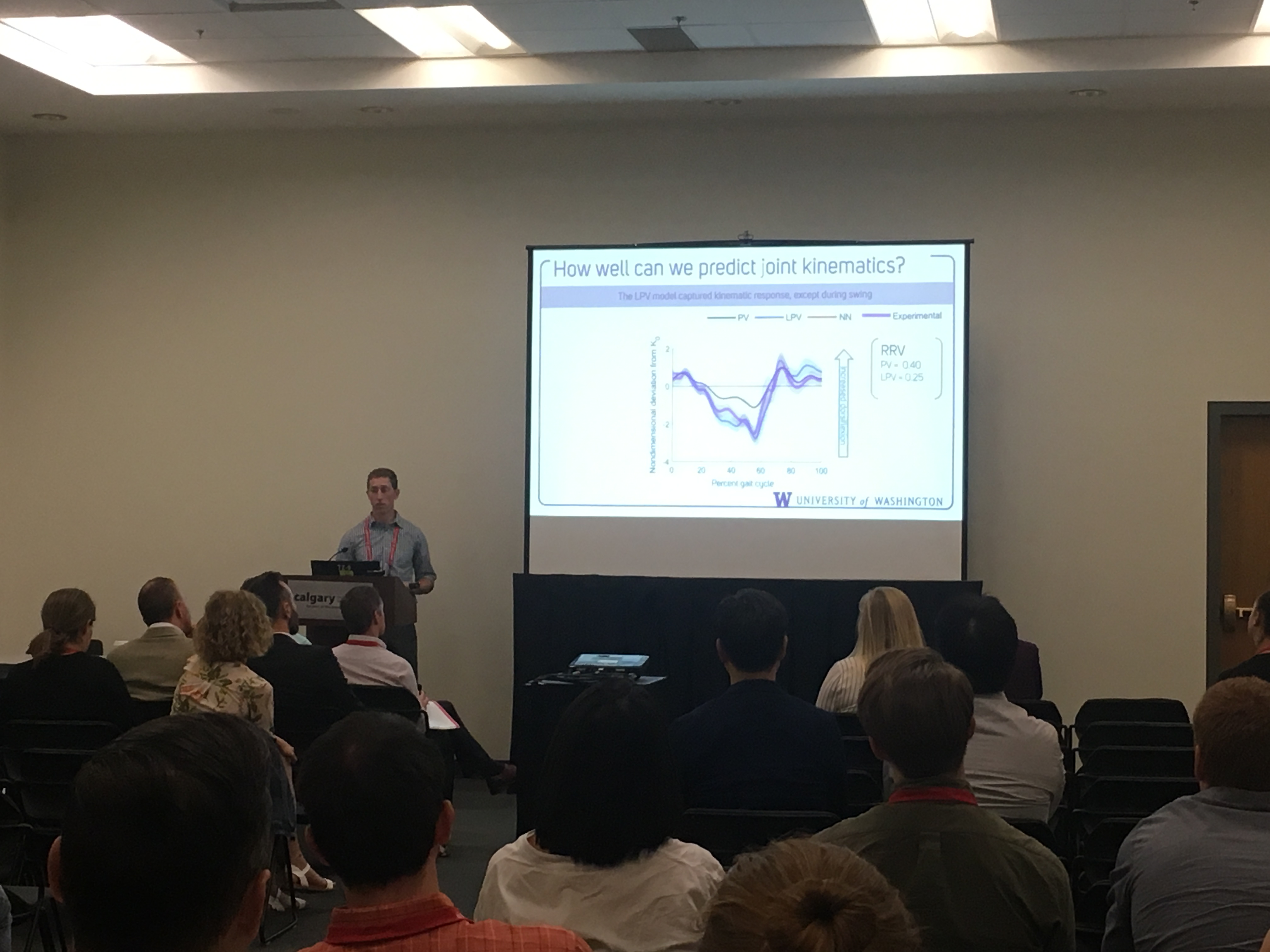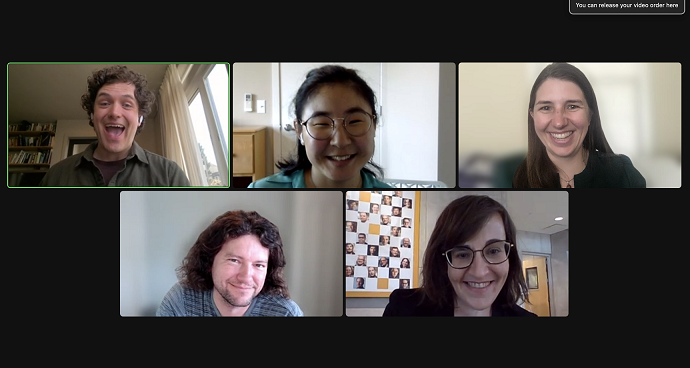 Congratulations to Dr. Momona Yamagami on earning her Doctorate in Electrical and Computer Engineering! Dr. Yamagami’s PhD thesis dissertation was titled Modeling and enhancing human-machine interaction for accessibility and health. Congratulations and best of luck as you move forward as a CREATE Postdoctoral Researcher.
Congratulations to Dr. Momona Yamagami on earning her Doctorate in Electrical and Computer Engineering! Dr. Yamagami’s PhD thesis dissertation was titled Modeling and enhancing human-machine interaction for accessibility and health. Congratulations and best of luck as you move forward as a CREATE Postdoctoral Researcher.
Uncategorized
Congratulations Charlotte! Charlotte Caskey passes her Ph.D. Qualifying Exam
Alyssa Spomer 2020 ‘Husky 100’ Awardee
Congratulations to Alyssa Spomer for being awarded the Husky 100. This award recognizes 100 students who are making the most of their time at UW through coursework, research, volunteer and leadership efforts, internships, and jobs: they have created their own Husky Experience.
Please help us in congratulating and welcoming Alyssa into the 2020 Husky 100 class!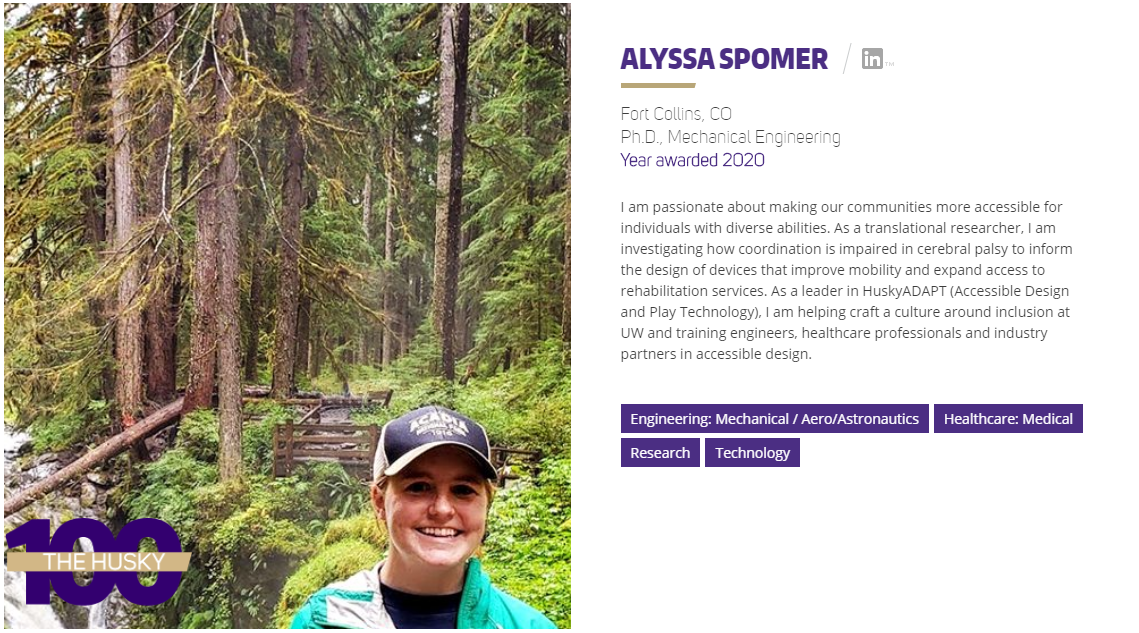
Congratulations – Damon Ding is awarded UWIN’s Innovation Undergraduate Fellowship in Neuroengineering.
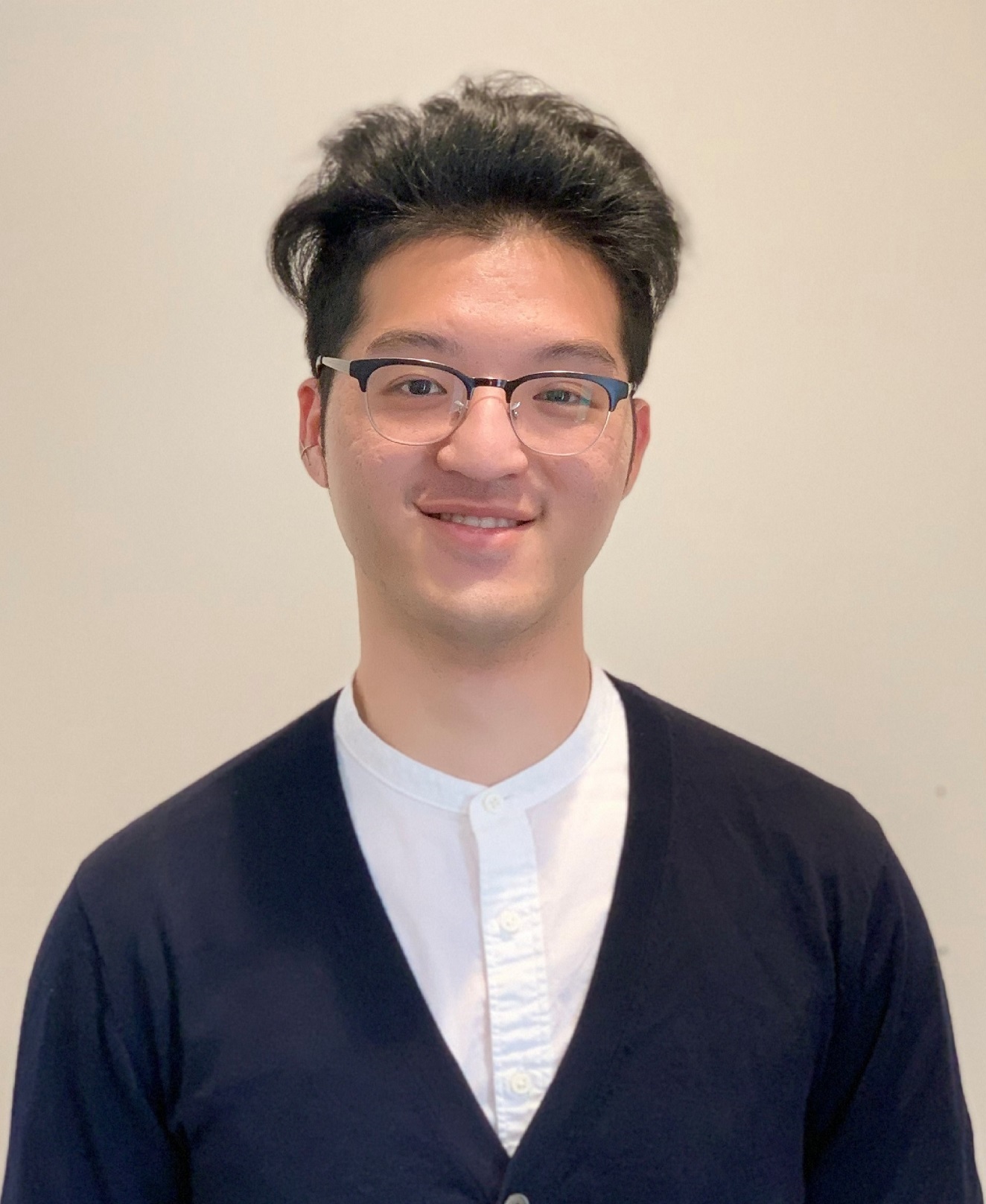 Our undergraduate student, Damon Qilang Ding, has been awarded the Innovation Undergraduate Fellowship the UW’s Institute for Neuroengineering. The UWIN Fellowship provides funding for Damon to conduct research in his upcoming quarters and is a highly prestigious and selective competition. Congratulations, Damon!
Our undergraduate student, Damon Qilang Ding, has been awarded the Innovation Undergraduate Fellowship the UW’s Institute for Neuroengineering. The UWIN Fellowship provides funding for Damon to conduct research in his upcoming quarters and is a highly prestigious and selective competition. Congratulations, Damon!
Damon’s research is to lead a fabrication, assembly, and tuning of a dynamic walking bipedal robot, which will serve as a testbed for validating the Ability & Innovation lab’s simulation framework evaluating whether discrepancy modeling with data-driven approaches enables more accurate dynamic solutions of bipedal movement with both unaltered and altered control.
ISB 2019 Recap
Five members of our lab – Kat, Michael, Alyssa, Megan, & Nicole – attended ISB 2019 in Calgary, Canada. The International Society of Biomechanics promotes and supports international contacts amongst scientists, the dissemination of knowledge, and the activities of national organizations in the field of biomechanics.
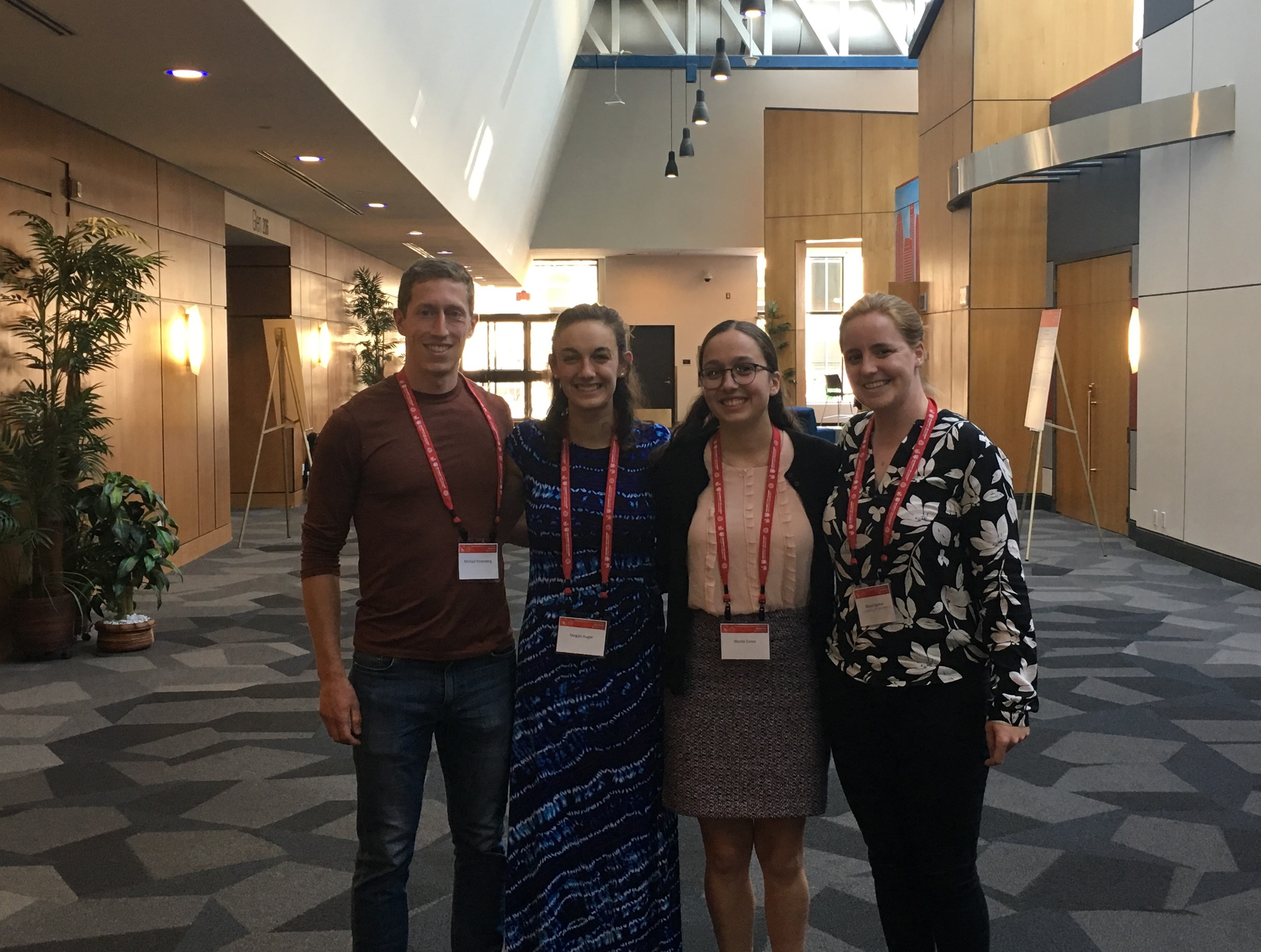
Our work at the conference included:
Kat Steele: ISB presentation on in-clinic EMG monitoring for muscle activity and movement in acute care in the initial days after stroke.
Michael Rosenberg: ISB poster showcasing how individuals’ kinematics and muscle activity change in response to ankle exoskeleton stiffness during acceleration from standing. ISB presentation on open-loop modeling of response to ankle exoskeleton torque during walking.
Alyssa Spomer: ISB poster highlighting how motor control is impacted when typically developing individuals emulate cerebral palsy gait patterns. ISB poster on understanding how individuals can alter motor control expression using visual biofeedback.
Megan Auger: ISB presentation on how muscle coordination strategies in typically developing children and children with cerebral palsy are not accurately captured using standard musculoskeletal modeling optimization algorithms in computer simulation.
Nicole Zaino: ISB presentation on spasticity reduction via rhizotomy in children with cerebral palsy and how there was no significant difference in the change in energy consumption when compared to a control group of children with cerebral palsy who had no rhizotomy.
TGCS 2019
Additionally, two members of our lab – Michael & Megan – attended TGCS 2019 in Canmore, Canada prior to ISB 2019. The Technical Group on Computer Simulation (TGCS) is a scientific and technical meeting for investigators and students in all areas of computer simulation in biomechanics. This group was a highly-focused subset of the ISB community, primarily focusing on forward simulation of unimpaired and pathological gait patterns, but also touching on multi-scale simulation, diving, cycling, and wheelchair use.
